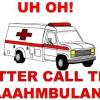Sign in to follow this
Followers
0

Traffic Advisors On Rigs...Purpose?
Started by
x4093k,
-
Recently Browsing 0 members
No registered users viewing this page.

Started by
x4093k,
No registered users viewing this page.